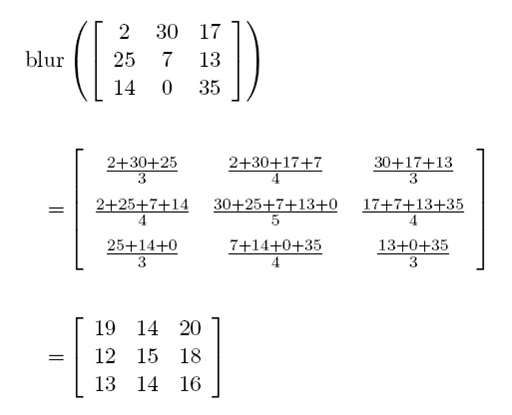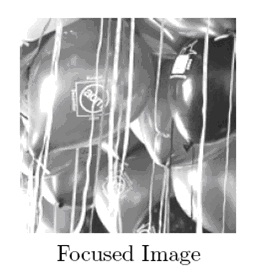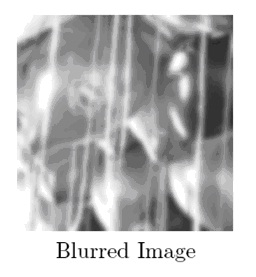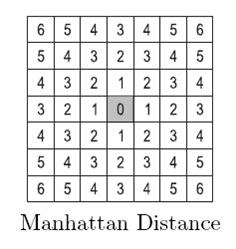用高斯消元对高斯模糊的图像还原....




2 2 1 1 1 1 1 3 3 1 19 14 20 12 15 18 13 14 16 4 4 2 14 15 14 15 14 15 14 15 14 15 14 15 14 15 14 15 0 0 0
1.00 1.00 1.00 1.00 2.00 30.00 17.00 25.00 7.00 13.00 14.00 0.00 35.00 1.00 27.00 2.00 28.00 21.00 12.00 17.00 8.00 21.00 12.00 17.00 8.00 1.00 27.00 2.00 28.00HintThe Manhattan Distance (sometimes called the Taxicab distance) between two points is the sum of the (absolute) difference of their coordinates. The grid on the lower right illustrates the Manhattan distances from the grayed cell.
#include <iostream>
#include <cstdio>
#include <cstring>
#include <algorithm>
#include <cmath>
using namespace std;
const double eps=1e-8;
const int maxn=130;
double data[maxn/10][maxn/10],a[maxn][maxn],x[maxn];
int n,m,d;
int equ,val;
void Gauss()
{
int k,col,mar;
for(k=0,col=0;k<equ&&col<val;k++,col++)
{
mar=k;
for(int i=k+1;i<equ;i++)
{
if(fabs(a[i][col])>fabs(a[mar][col]))
mar=i;
}
if(fabs(a[mar][col])<eps) return ;
if(k!=mar)
{
for(int i=col;i<val;i++)
swap(a[k][i],a[mar][i]);
swap(x[k],x[mar]);
}
x[k]/=a[k][col];
for(int i=col+1;i<val;i++)
a[k][i]/=a[k][col];
a[k][col]=1.;
for(int i=0;i<equ;i++)
{
if(i==k) continue;
x[i]-=x[k]*a[i][col];
for(int j=col+1;j<val;j++)
a[i][j]-=a[k][j]*a[i][col];
a[i][col]=0;
}
}
}
int main()
{
bool fst=false;
while(scanf("%d%d%d",&m,&n,&d)!=EOF)
{
if(n==0&&m==0) break;
if(fst) putchar(10);
else fst=true;
memset(a,0,sizeof(a));
memset(x,0,sizeof(x));
for(int i=0;i<n;i++)
{
for(int j=0;j<m;j++)
{
scanf("%lf",&data[i][j]);
int cnt=0;
int t1=i*m+j,t2=0;
for(int ii=0;ii<n;ii++)
{
for(int jj=0;jj<m;jj++)
{
if(abs(i-ii)+abs(j-jj)<=d)
{
t2=ii*m+jj;
a[t2][t1]=1.;
cnt++;
}
}
}
x[t1]=data[i][j]*cnt;
}
}
equ=val=n*m;
Gauss();
for(int i=0;i<n;i++)
{
for(int j=0;j<m;j++)
{
printf("%8.2lf",x[i*m+j]);
}
putchar(10);
}
}
return 0;
}
HDOJ 3359 Kind of a Blur,布布扣,bubuko.com
原文:http://blog.csdn.net/ck_boss/article/details/38031885